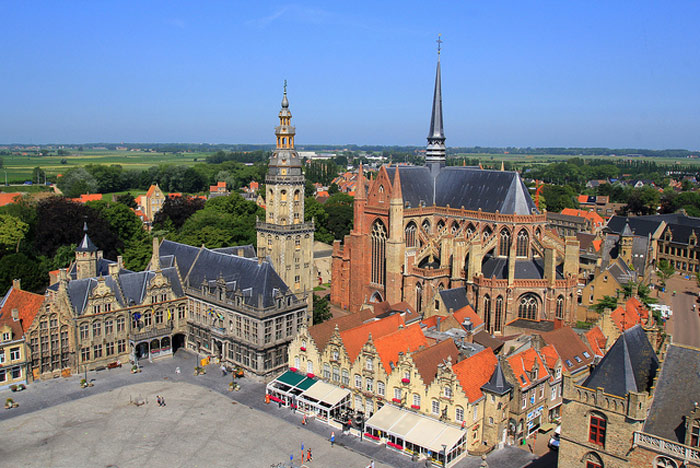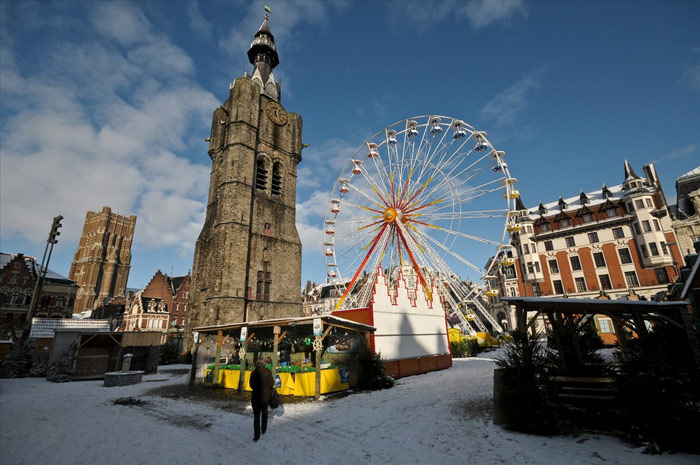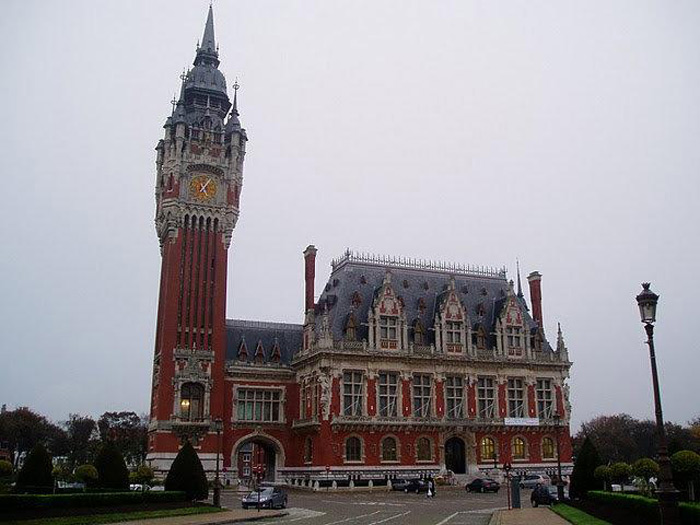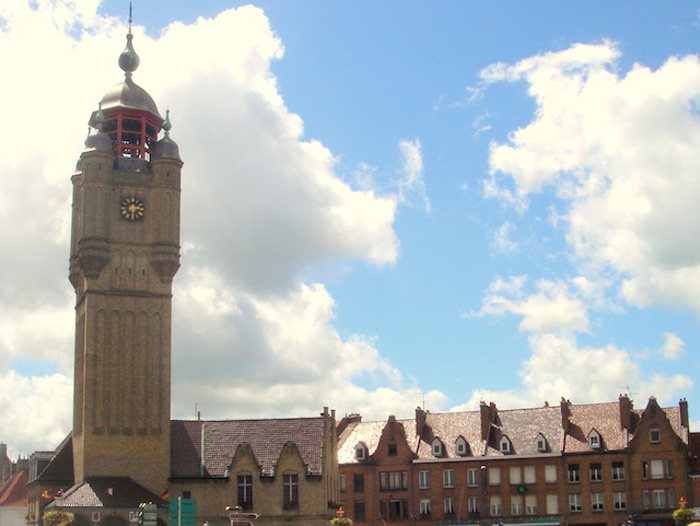Bell towers - World cultural heritage in Belgium and France
Unesco's Scientific, Educational and Cultural Organization has recognized French and Belgian bell towers, of which 32 are Belgian and 23 French are World Cultural Heritage in 1999.

In Unesco 's 1999 recognized heritage list, 56 bell towers have been recognized as World Cultural Heritage sites. The complex of bell towers consists of 23 towers located in the northern part of France, 32 bell towers located in the Franders and Wallonia regions of Belgium.

These bell towers were built in different periods from the 11th century to the 17th century. Because of the heterogeneous construction time, each tower was built in a different architectural style. Can recognize the presence of many different architectural styles such as Roman, Gothic, Renaissance, Baroque .

These bell towers were built to commemorate and testify to the victories of the people in many different periods. Often, people often choose to build monuments and large squares to celebrate the victory more than to choose to build bell towers. Because the bell towers are considered symbols of the Church, but later gradually the bell tower became more popular throughout Europe. The major cities of France and Belgium competed to build a bell tower, and the bell towers have since become a symbol of the power and wealth of each city.

Besides the unique artistic and architectural values expressed in each tower, the bell tower is also a symbol, a historical testament to the transition from feudal to liberal.
The bell towers were built between the early 13th and early 14th centuries with Roman architectural style. With square base architecture, not too high, all floors have doors, the top floor always has a dome. The main axis is the pillar for the entire tower, the staircase will be placed in a corner of the tower. The carvings on the inside and the base of the tower are quite simple with typical symbols of Roman architecture . The entire tower bridge built at this time is not too fussy, most of them are used only with the common bell tower function.

The 14th and 15th centuries were the time when the most popular bell towers were built. During this period, the structure of the bell towers gradually shifted from Norman to Gothic style. The height as well as the tower construction architecture also began to be more sophisticated, the architects of that period began to focus and go deep and decorative details to create a gorgeous look for each project.

Coming to the 16-17 century, architecture continued to change with the influence of the Renaissance and Baroque art styles. This period also clearly marked the change in the performance of bell towers compared to the previous centuries. From being built just like ordinary bell towers, the bell towers of this period were transformed to combine with church, hotel and town hall architecture .
Maybe it was boring with the old expression of centuries ago, but art cannot be repeated. Architects have combined the construction of public and religious buildings with the construction of a bell tower to create versatile and impressive buildings. At this stage, the bell tower was also designed and built higher, more majestic and more sophisticated in the layout and presentation. It seems that the later built tower is always taller, taller and extravagant than the previous towers as an underground race of wealth and power.

Until the 17th century, the underground race and the trend of building a bell tower ended. Despite being built for centuries, overall, these architectural works still create a common appearance and appearance for a World Cultural Heritage . Experiencing many changes of time, environment and human impact, some towers were damaged and degraded. However, since all the towers have been listed as historical relics before being recognized by Unesco, it has been restored and renovated and most of the towers still retain their original beauty.

The list of 56 recognized bell towers has special towers that are highly appreciated in architecture, its historical value and its magnificent beauty. For example: Bruges Tower, Antwerp Tower, Cloth Hall, Ghent, Mons . These bell towers are still tourist attractions to Belgium and France. Around the bell tower area, it was easy to see the group of tourists huddled in souvenir pictures so the areas with the bell tower were always crowded and crowded.
Selected and recognized bell towers must meet the following criteria: These are special buildings in the era when they were built. In addition, these works must be politically and historically significant.
- Europe's Canal du Center - World Cultural Heritage in Belgium
- Historical center of Brugge
- Villa Stoclet - World cultural heritage in Belgium
- The new Neolithic flint mines of Spiennes
- Brussels Square
- Church, hill in Vezelay - France
- Beguinages monasteries of Franders
- The main mine is in Wallonia
- Electricity Versailles - France
- Secrets - World Cultural Heritage in China
- Fontainebleau Castle - France
- Pile prehistoric houses around the Alps - Austria's world cultural heritage
 Suzhou classic bonsai garden - China
Suzhou classic bonsai garden - China Chau Nguyen Dynasty
Chau Nguyen Dynasty Thai Son Mountain - World Wonder
Thai Son Mountain - World Wonder Ancient villages of Shirakawa-go and Gokayama
Ancient villages of Shirakawa-go and Gokayama